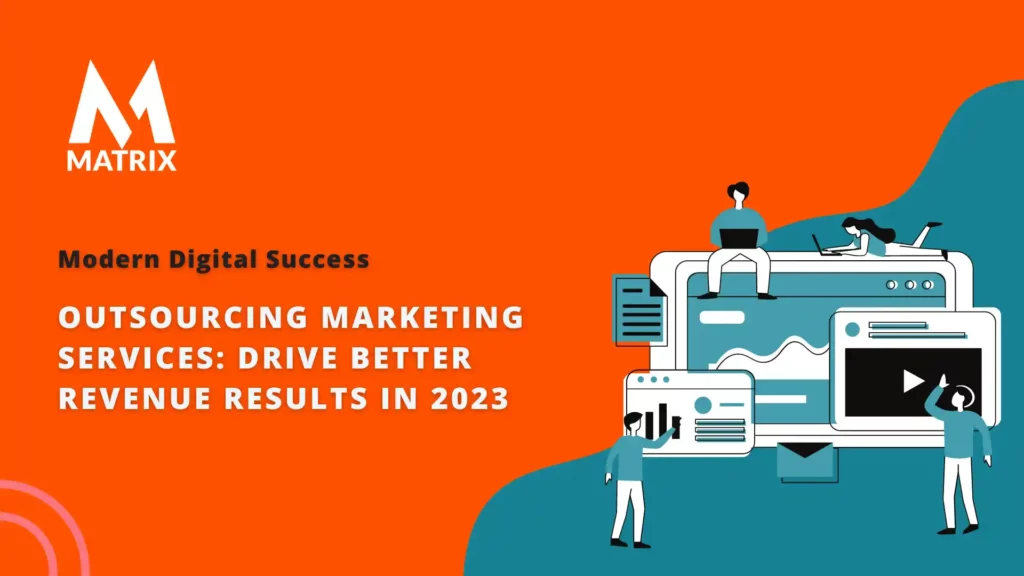Convert more prospects with account-based marketing tactics that work.
Account-based marketing tactics are a critical strategy for startups and enterprise sales teams. Account-based marketing strategies (ABM) have become one of the most effective strategies modern companies use.
Account-based marketing examples exist in startups and larger businesses.
While some thought this model wouldn’t yield profitable results, 80% of businesses using this strategy have seen an increase in their return on investment (ROI), which is much more significant than other tactics.
But what is ABM? And why are so many different industries embracing it as their new marketing tool?
ABM visualizes prospective clients or accounts as if they were their market. Regarding the healthcare industry, doctors can be considered a specific account.
Furthermore, larger organizations, such as medical centers, have a committee of stakeholders. If using ABM, each stakeholder should be approached as individual markets since they will likely have different perspectives and goals.
This might sound counterintuitive, considering traditional strategies look to engage with as many clients as possible within a market. However, numerous companies now understand and benefit from the use of ABM. Unsurprisingly, around 60% of businesses are now implementing ABM-based models or planning.
The important thing is not just doing it but knowing how to do it correctly. Therefore, it’s important to know the steps you should take to implement account-based marketing with these 11 marketing tactics.
What are Account-Based Marketing Tactics?
Account-based marketing (ABM) is a type of marketing that focuses on specific accounts and uses personalized campaigns to try and win them over.
It’s a more targeted approach than traditional marketing, which usually takes a “shotgun” approach and tries to reach as many people as possible.
With ABM, you tailor your campaigns to the accounts you’re targeting, and you use data analytics to determine which tactics will work best with each account.
The Benefits of Account-Based Marketing
Statistics reveal the many benefits of account-based marketing:
- After two years, 89% of marketers report a higher return on investment from ABM than traditional marketing initiatives.
- Companies practicing ABM generate 208% more revenue for their marketing efforts.
- 91% of ABM marketers see a larger average deal size, with more than 50% increases.
- In a survey of individual stakeholders, 40% said they were more willing to buy from suppliers who tailored content to their specific needs than those who didn’t.
- Nearly one-third of marketers reported more than 100% greater engagement with C-suite targets when working in an account-based manner.
- ABM reduces up to 50% of wasted sales time on unproductive leads.
Create Your Account-base Marketing Team

Something that’s often underrated is the importance of teamwork when it comes to ABM marketing. Here, the information marketing strategists and sales analysts can come together to provide you with the necessary knowledge.
Therefore, before implementing ABM strategies, you should form a qualified team with people from both sales and marketing. This way, you can amplify the information available when selecting prospective clients.
Identify The Accounts with Your Account-Based Marketing Tactics
When it comes to healthcare, you must learn how the organization is built and managed. Is it a family group? Are the stakeholders doctors? Who are the biggest influencers in the decisions made within the organization?
Making an initial list of all the organizations that might be interested in your product will help you narrow down your prospective clients. After this, the next step is going deeper into the people who make the decisions. This valuable background will help you dictate how you will present your product.
The more you know about how the healthcare organizations you want to approach work, the better. You should know as much about their business as possible by initiating contact.

Only then can you genuinely offer products that respond to what they might need or want for their organization? Also, knowing whom you should approach will allow you to head directly toward the people who make the decisions.
Use Smart Resources and Account-Based Marketing Tactics
How are you supposed to get this information? Well, you can now use dozens of resources to learn more about healthcare organizations. To know how ABM works, you should study the tools that will allow you to put this strategy into practice.
Some platforms that can provide you with the information you need are Hubspot and LinkedIn. Most healthcare companies, providers, and practitioners look to put their names on different platforms.
This can offer you unique opportunities to learn more about their size, revenue, and what they focus on. Furthermore, you can see whom they interact with, which might allow you to identify prospective clients.

Narrow Down Your Account-based Marketing Tactics.
You can decide to be as specific as your resources allow you. Depending on your product, you could focus on one medical area, such as cardiology. Another way to segment your efforts is by studying the overall distribution of the specialty you’re interested in.
If many cardiologists are interested in what you offer in a specific city, then it might be time to channel your efforts toward that city.
Personalize Your Approach with Proven Account-Based Marketing Tactics
Once you have identified and studied your prospective clients, you should make your approach as personalized as possible. If you’re sending them an email, make it a direct email that shows you know their business.
Avoid generic or bot emails. Interestingly, 60% of those who open direct-mail emails are more likely to visit the website link of the sender.
More often than not, stakeholders in health industries have to deal with different issues on a weekly matter. They won’t be interested in anyone that might make them waste their time. Be direct with your offer by employing the knowledge you’ve gathered.
Personalizing your approach will make you more likely to build a long-lasting relationship. This is precisely the goal of ABM: building lasting relationships with clients that will continue to invest over time. Health organizations tend to be reputable clients with long-term plans to visualize their goals.
Something to consider is the importance of knowing which platform is mostly used by the people you want to approach. You’ll already make an excellent first impression by contacting them on their preferred platform.
Make an Accurate Budget
It’s important to determine the investment you’ll need to make to accommodate this strategy. Initially, you might consider getting a payday loan to cover some expenses.
This is because ABM yields tangible results, but it might take longer than the immediate buys from traditional marketing. The upside is that these relationships with healthcare organizations will be more lasting if the follow-up is done correctly.
Your account-based marketing tactics need to be supported by a marketing budget that can support your goals.
Something to add to this budget is a personalized gift. This is a great way to stand out from other companies. It doesn’t need to be expensive, as long as it’s not generic. Make it about them. It’s even better if it’s something useful.
It can be a branded base with their name, where they can place their prescription pads. Or something like nutritional posters that allow them to explain diet changes to their patients. The goal is for them to remember your business in their daily practice.
Use Social Media Marketing

Social media marketing will be a key ally throughout the entire process of ABM marketing. You can use it in different stages of the process:
Study and Understand Their Business and Needs
Studying their product, how they interact with other accounts, and how their employees respond to them is a great way to get to know your prospects. Depending on the specific medical area, you might want to see how the clients of a pharma company interact with them or the satisfaction level reported by patients of a hospital.
This will allow you to identify their needs and offer to respond to them. Even their lack of social media presence could lead you to determine if this is something this organization could improve.
Make Contact with These Prospects
This one is the most delicate. While using a platform such as LinkedIn to initiate contact is appropriate and following them on Twitter, Facebook, or Instagram, the initial approach should be subtle. Instead of directly offering them your products or services, engage.
This can be done by responding to one of their posts constructively or retweeting something they’ve posted that might interest your followers.
Place Valuable Ads and Account-Based Marketing Tactics
Account-based marketing tactics include re-targeting PPC ads. Just as you learn about them through social media, they can also learn about you on the same platform. This is where all your research pays off. You can create a paid media advertising campaign that, while not targeted, addresses their needs and concerns.
Online ads can help your account-based marketing tactics when integrated.
You can indirectly offer them a solution by learning what they might be interested in. This can be very valuable when it comes to reaching the majority of stakeholders in a healthcare organization.
Your Website Should Inform on What You Do, Not On Who You are
After you make the initial contact, your prospect will want to visualize your website. A common mistake is making it all about you, which won’t tell your customers what they need to know. Instead, the optimal focus is making about what you do.
How your actions and strategies will make their business better. Showcase your experience with healthcare organizations and how your plans have helped them succeed.
Furthermore, you can personalize your website so that certain areas contain information pertinent almost exclusively to the client in question.
You can only achieve this if you do proper research, which is the product of the joint effort of the sales and marketing teams. By reserving one section of your website for healthcare-related information, you can make sure you’ll grab their attention.
If, as we said before, you’re focusing on a specific specialty, such as cardiology, then make sure your website shows how your product can be an asset to cardiologists. This allows them to know what you can do for them, even before you have made any offers.
Offer Educational Tools and Account-Based Marketing Tactics
One of the things most companies love, including those in the healthcare industry, is knowledge. You can also start an interaction by offering educational tools that can be worth their time.
Like every tactic we’ve mentioned so far, it needs to be personalized. The more specific it is to what they do and what they’re interested in, the better.
Involve Them in Your Content
Through content marketing, you can engage your target audience. Make it interactive with interactive marketing techniques. You don’t have to interact with a healthcare organization before you make them part of your content. Let’s say you want to start doing business with a hospital.
You can mention the hospital’s name in one of the blog posts on your website dedicated to health topics. This might make you stand out from a sea of other companies.
The goal is to get on their radar. This way, they will have heard of you when you first interact with them. To increase the quality of your content, you could even feature an interview with one of the doctors. Even better if they’re stakeholders in the company. This will work for you in two different ways. You’ll get to create good content, and you’ll be starting the interaction in a way that feels natural.
Don’t Forget the Personal Touch
Digital marketing is one of the best ways to do marketing. A personal touch can also help greatly. It can even set up the scenario for initial interaction. Your brand’s presence at a medical conference or even creating an event specifically tailored for them are good examples.
Proven account-based marketing tactics will drive higher close ratios.
A workshop designed for cardiologists in a specific city is one of many ways to promote in-person encounters that allow you to interact with the accounts you want to target.
Furthermore, a summit in which trends for hospital care are presented could attract stakeholders you want to approach. This is a combination of general marketing and ABM marketing.
You have narrowed down the field, the area, and the specific people you want to interact with. Now, you can offer an event destined for them and others to show them what you have to offer without being intrusive.
We’re listening.
Have something to say about your thoughts on account-based marketing tactics?
Share it with us on Facebook, Twitter, or LinkedIn.
Jim Hughes is a content marketer at OpenCashAdvance with significant experience covering technology, finance, economics, and business topics for about 3 years. He likes to share all the insight and knowledge he has.
What is Account-Based Marketing?
Account-Based Marketing (ABM) is a marketing strategy that allows businesses to identify prospective clients and approach them directly and efficiently. This strategy promotes focusing the resources available to provide tailored-made solutions to a potential client’s problems.
Why Use Account-Based Marketing?
The tools provided by ABM allow the identification of the decision-makers within a large company. This is why ABM is especially useful when dealing with teams of stakeholders. By studying their interests, a more effective approach can be made.
How is Account-Based Marketing Used?

After determining the sector in which a business wants to focus, they should also identify whom to approach within said business. After studying their needs, a company can offer focused solutions. Furthermore, by presenting their work in healthcare, a business can show why an organization should work with them.
Is Account-Based Marketing Useful for the Healthcare Industry?

Given the common structures within the healthcare industry, such as boards of stakeholders and value analysis committees, ABM is a unique tool that can greatly help in this context. Instead of trying to approach a group, contact the individuals that make the decisions that can be the best way to understand what they’re looking for and how to offer them your product.




